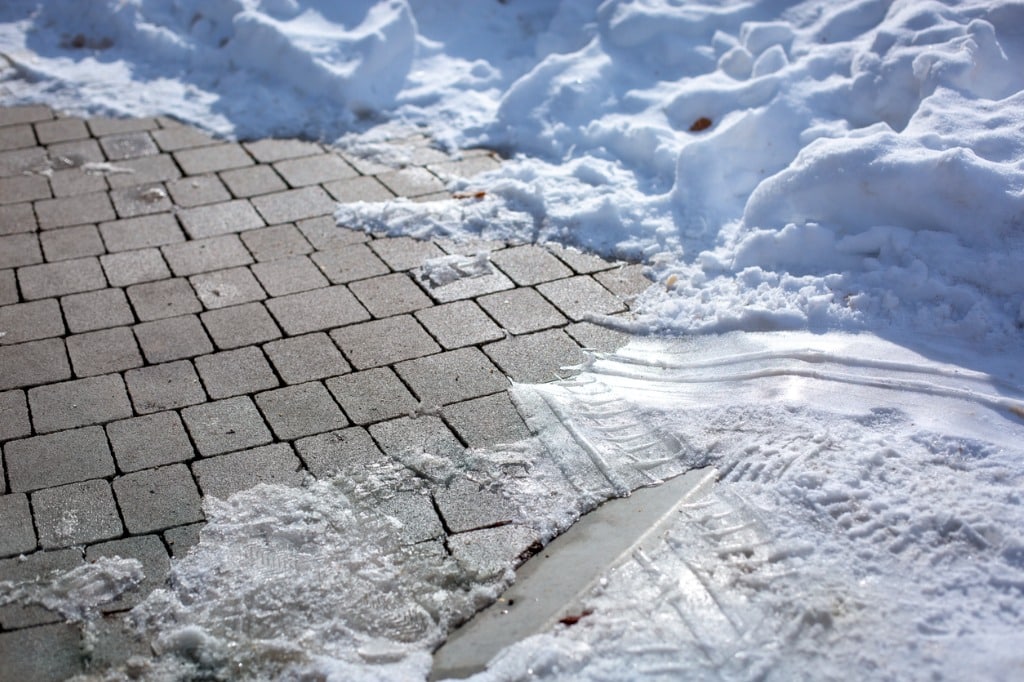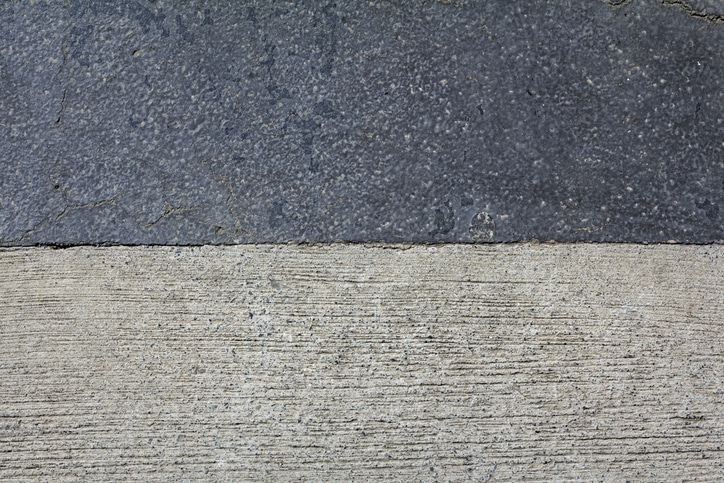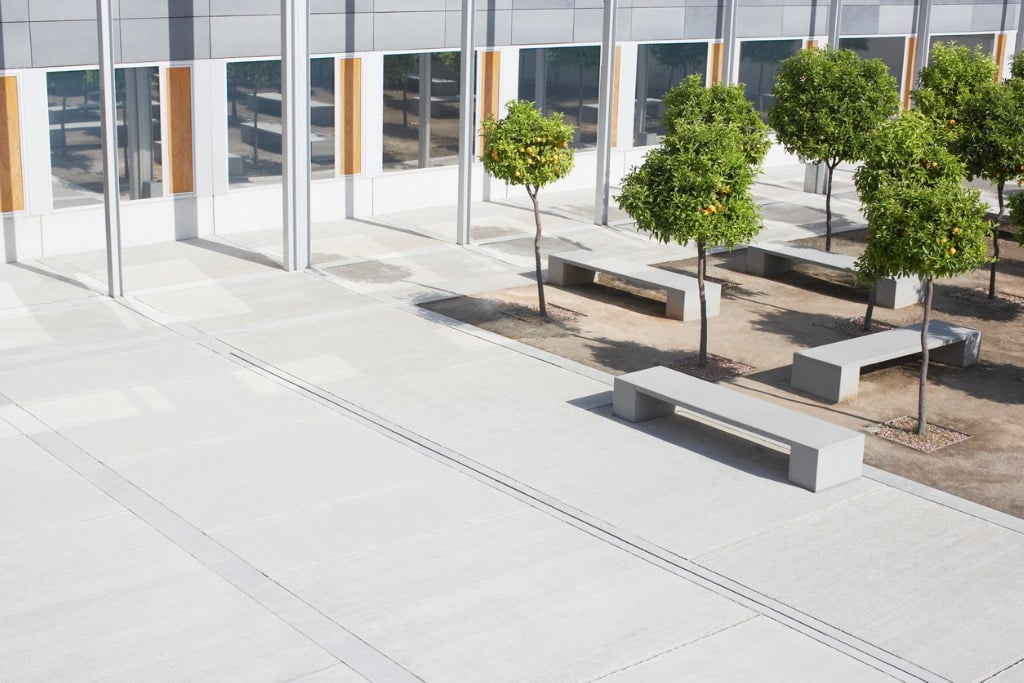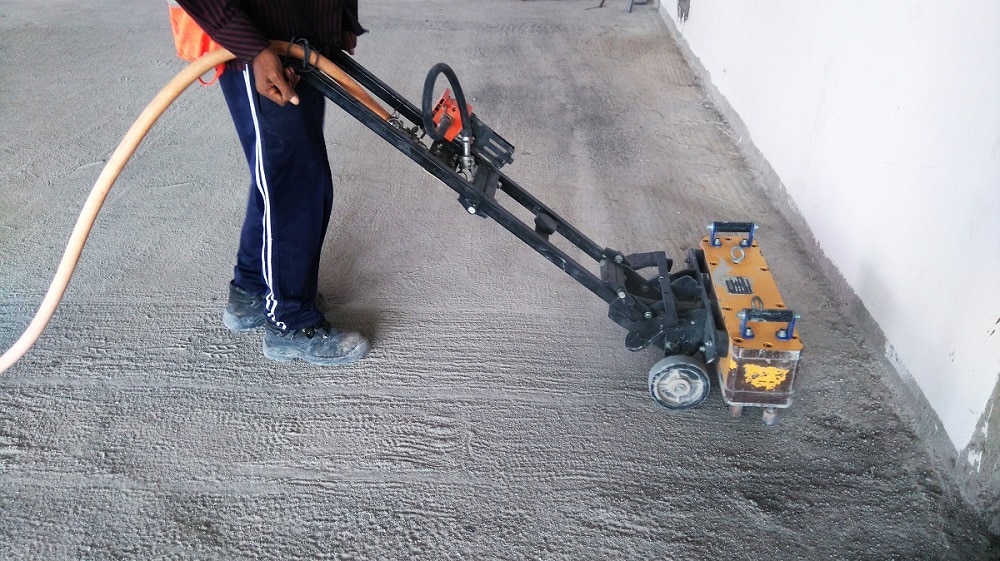Does concrete absorb water? Yes. Because it’s porous, concrete absorbs water. Excessive moisture can lead…

Negative Effects of Cold Weather on Concrete
At first glance, concrete is a rigid, durable material that seems indestructible against the elements. However, it’s not uncommon for even the most robust concrete to show signs of weakness, especially when freezing temperatures and snowstorms hit.
For homeowners, the main concern regarding cracked or damaged concrete is that it is ugly. Shoddy driveways and disheveled pavement can ruin your home’s curb appeal. While some may not care, for others, this is a big concern.
When it comes to commercial properties, if you do not adequately prepare your concrete for the winter, you might end up with more than just cracked pavement. You could experience operational downtime and profit loss.
For example, if you have cracked sidewalks, you may have to halt your operations for repairs and replacements, meaning you could lose one or more days’ worth of income. You could even face a series of liability claims if pedestrians, customers, or employees sustain injuries or damage their vehicles due to your shoddy concrete.
Believe it or not, using salt as a de-icer or to melt snow can actually damage your concrete in the long run. As the salt melts the ice or snow, it lowers the freezing point of the water, which attracts moisture. Moisture is the enemy of concrete, and excess moisture will increase the freeze-thaw cycle.
What is the Freeze-Thaw Cycle?
Moisture, whether it’s from rain, snow, ice, or water vapor, can damage concrete. When water comes into contact with unsealed concrete surfaces, it will seep into the concrete’s pores, as well as any cracks the concrete may have.
When temperatures drop, the water that is now inside the concrete will freeze and expand. This expansion can discolor the concrete or lead to hairline cracks, surface scaling, rock pops, and joint corrosion. All of these things are bad for your concrete. To protect your concrete from frozen water, you need to seal it properly before cold weather begins.
3 Ways Snowfall Damages Concrete
Snowfall can be seriously damaging to your concrete, especially if it is left unattended. Here are three ways that snowfall can deteriorate your concrete
1. Scaling
Scaling occurs when thin layers of exterior concrete slabs start to peel. These peels look like small flakes and are generally thinner than a sheet of paper. Light scaling shows small patches of flakes on the flatwork slab. When the problem becomes severe, these peels can occur deeper into concrete, exposing fine and coarse concrete aggregates.
Scaling often occurs when concrete is exposed to extremely cold temperatures, significant amounts of moisture, and the freeze-thaw cycle. Additionally, scaling problems can worsen if property owners use the wrong de-icing chemicals.
2. Spalling
Spalling is another common concrete issue that arises when winter comes around. It occurs when the cracked areas of the flatwork slab have delaminated from the substrate. The problem is mainly caused by rebar corrosion when steel materials have been extensively exposed to moisture and the freeze-thaw cycle.
Meanwhile, when steel corrodes, it can expand and occupy a higher volume than it initially did. The pressure from expansion can lead to concrete delamination and spalling. If your concrete is spalling, you should attend to it immediately.
When you leave your concrete in this deteriorative state, the value of your property could decrease as the damage becomes widespread. Additionally, customers likely stay away from potentially hazardous establishments.
3. Cracking
In the winter, poorly designed or poorly mixed concrete is at an increased risk of cracking. After the snow falls, melts, and becomes water, the concrete absorbs the water and refreezes when exposed to low temperatures.
When ice forms within the slab, it causes internal tensile pressure, which can lead to cracks. You should also not salt your concrete as it might worsen the problem. Salt turns to water, which repeats the freeze-thaw cycle.
Preventing Concrete Damage Caused By Cold Weather
It pays to prepare your property before winter comes along. Preparation can save you money from potential business interruptions and liability claims. It can also preserve your property’s appeal and structural integrity even if a snowstorm hits.
The best way to prevent damage to your concrete caused by snowfall and the freeze-thaw cycle is to seal it. High-quality sealers can protect your concrete from freezing temperatures, water, snow, ice, salt, chemicals, and other harsh substances.
The best part is, you only have to apply a sealer to your concrete once every two to three years. However, if you want to play it safe, you could apply the sealer each year before the winter weather comes to town.
On top of sealing your concrete, the importance of snow plowing cannot be understated. If snow hits your home or business, make sure to get out there and shovel it. Keeping snow and slush away from your concrete can help minimize the risk of damage. Make sure to use a plastic snow shovel, as metal tools can chip away at your concrete and cause damage too.
If you care for your concrete and adequately prepare for the wintertime, your concrete will stay strong, durable, and visually appealing for years to come!
K&E Flatwork is Kansas City’s Choice for Concrete Repairs!
Concrete and cold weather do not mix (see what we did there?). Unfortunately, your pavement could become heavily damaged if you don’t correctly seal your concrete and prepare for freezing temperatures and snowstorms. If you believe that your concrete is damaged beyond repair, make sure you give K&E Flatwork a call.
For years, we have been Kansas City’s go-to provider of concrete repairs and installations. No matter what shape your concrete is in, we will make sure that it looks brand new by the time we’ve finished the job. If you require concrete repairs, you can email us at info@keflatwork.com or give us a call at (816) 388-9303.




This Post Has 0 Comments